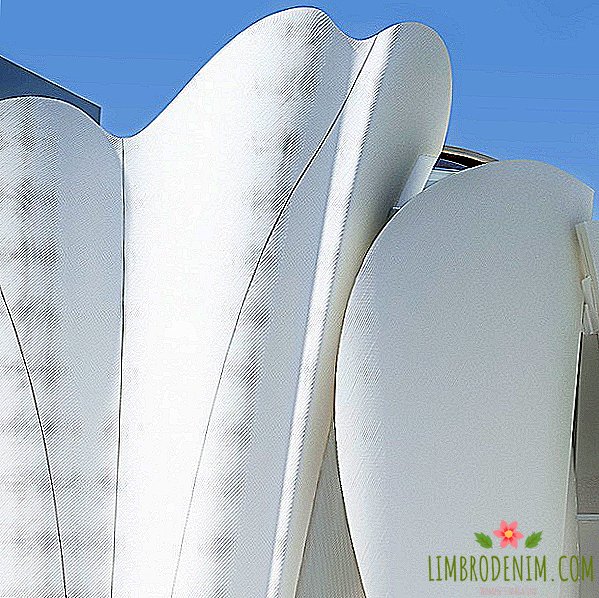10 food additives for modern gastronomy
We are completing a series of posts about modern gastronomy - a new approach to the preparation of familiar products. At our request, Anton Utkin spoke out in defense of food chemistry, cited a list of chemical compounds useful in every kitchen and a few simple recipes that illustrate this benefit.

 First of all, concerns that "all E supplements are harmful" are groundless. The list with the letter "E" is just a list of the European Agency for Food Safety, adopted for use in many European countries, including Russia.
First of all, concerns that "all E supplements are harmful" are groundless. The list with the letter "E" is just a list of the European Agency for Food Safety, adopted for use in many European countries, including Russia.
Secondly, the fears themselves are just echoes of very old dramas about certain substances. Take, for example, food dye amaranth (E123), aka Red Number Two. The noise around it arose in the 70s, when American activists literally forced the Food & Drug Administration, an agency that deals with food safety and drugs in the United States, to ban the use of amaranth, referring to a 1971 Soviet study that raised the issue of amaranth carcinogenicity. And indeed, repeated FDA studies have confirmed that if rats are fed daily with high doses of amaranth — as many thousands of cans of soda contain — then yes, rats become ill. Convincing activists that several thousand cans of soda a day were too much failed, and in 1976 amaranth was banned in the United States. It is still allowed in Canada, the UK and a number of European countries that did not agree with the above logic - and what, people are dying like flies? Of course not. However, the noise around the “Red Number Two” lasts almost 40 years later.

All these substances are extracted from natural sources. Flour, butter, sugar, salt and other familiar products undergo incredible chemical transformations on the way to the store shelf.

Third, the synthetic nature of additives is alarming to many. This is also an interesting question, since almost all the substances from the list below are extracted from natural sources. Agar, sodium alginate and carrageenans are extracted from algae by fermentation, maltodextrin is obtained from starch, gelatin from animal or fish skin, albumin is egg white, and lecithin, respectively, yolk, and so on. And vice versa: baking soda, flour, butter, sugar or salt — our good old acquaintances — undergo absolutely unbelievable chemical transformations on the way to the store shelf, but they don’t cause any questions to the public because they are very common products.
Finally, all these substances are often negatively associated with cheap fast food and convenience foods - yes, indeed, the food industry likes to make candy out of low-grade raw materials using chemistry, but there is fast food or not - the question is individual taste preferences. However, the fact that products using these substances are eaten every day by millions of people around the world is the best evidence of the safety of these supplements: the amaranth scandal illustrates well that any re-emerging suspicions about the dangers of certain food additives instantly get into the news .
Below are the 10 most popular nutritional supplements in modern gastronomy. Immediately, we’ll warn you that there are insignificant simplifications in the descriptions that do not fully explain the chemistry and physics of processes, but do not affect the result of culinary experiments.
 Xanthan gum (E415)
Xanthan gum (E415)
 Gelatin
Gelatin
 Agar agar (E406)
Agar agar (E406)
 Carrageenan (E407)
Carrageenan (E407)
 Lecithin (E322)
Lecithin (E322)
 Albumen
Albumen
 Calcium Lactate (E327)
Calcium Lactate (E327)
 Sodium alginate (E401)
Sodium alginate (E401)
 Sodium citrate (E331)
Sodium citrate (E331)
 Maltodec strin (E459)
Maltodec strin (E459)
- the most useful and most versatile of the entire ingredient list. Xanthan gum is an ideal hydrocolloid, that is, a substance that can form an emulsion with water (in other words, thicken a liquid). The most common natural emulsion is milk, it is a suspension of milk fat in water; the more fat there is, the more viscous the mixture will be - for example, thick cream. Unlike the usual gelatin, starch and flour, xanthan gum is a relatively new chemical, first obtained in the 50s of the last century, and this is what makes it universal.
First, unlike flour and starch, xanthan practically gives neither taste, nor smell, nor color. Secondly, it needs quite a bit: 0.1% by weight of the entire liquid will already give a noticeable thickening, and 0.5% can turn the mixture into a paste. Thirdly, xanthan gum works at almost any temperature (that is, it dissolves in a cold liquid), with different acidity and withstands even a serious addition of alcohol - this is the perfect thickener. However, when working with xanthan, an immersion blender is needed: without it, you will be tormented by stirring lumps.
- The most popular gelling agent in European cuisine is gelatin. Gelatin is obtained by denaturing collagen, a protein that is the basis of connective tissue (tendons, bones, skin) of animals and fish. There is nothing unusual in gelatin, we included it in the list because of the specific situation that has developed around the store gelatin in Russia. The fact is that different types of gelatin differ in strength: it is calculated on the Bloom scale. The higher the number of bloom, the more gelatin gelatin; the problem is that almost all gelatin, widely sold in Russia, is not labeled according to Bloom. What do chefs and experienced housewives do? One type of gelatin is selected, it is tested once, the required amount of gelatin is calculated for one or another amount of the product and never change the proportion. Another way to solve the labeling problem is to order gelatin in specialized stores and stick to recipes that precisely set the proportions of the ingredients.
Gelatin is powdered and leafy; it is easier to handle the sheet: it needs to be soaked in cold water, pressed and stirred in a hot mixture, which, when frozen, turns into a gel. Gelatin is thermo-reversible: melted in the heat jelly can again harden.
- vegetarian gelatin substitute, extracted from algae; a relatively new substance in European cuisine (excluding France!), which, however, has long been well used in laboratories and in Asian cuisine.
Agar does not give a recognizable meaty taste; if you make a mistake with the amount of gelatin in a big way, your sweet jelly will have a distinct and not very desirable taste of the pig. Agar does not cause this problem. It dissolves completely only at high temperature, but there are also "cold" options for recipes that do not involve heat treatment: to do this, the agar must be dissolved in a small amount of water, added to the product and the mixture brought to a temperature of 35-45ºC. Like gelatin, agar is thermo-reversible, but it thaws at a much higher temperature - up to 85ºC, so that based on it you can prepare warm gravy, hot sauces and other dishes that require a high temperature during serving.
- another polysaccharide extracted from algae. If agar has been used in Asian cuisine for centuries, then carrageenan is a traditional thickener in Irish cuisine from where it comes from. In the food industry, three types of carrageenan are used: kappa, iota and lambda; We are interested in the first two types: kappa-carrageenan allows you to get solid gels, and iota - soft; Both gels are thermally reversible.
- one of the most popular emulsifiers, naturally occurring in egg yolk. It is a substance necessary for the normal functioning of the body, which is widely used for the formation of a wide variety of emulsions: take almost any cosmetic jar from the shelf and look for lecithin. Technically, this is not a hydrocolloid, but a set of phospholipids, fats and fatty acids, which, however, does not prevent us from adding this important and useful compound to the list: in modernist kitchen, lecithin is a popular way to make fairly stable foam from almost any liquid.
- part of the egg white; Like lecithin, it is widely used in the cosmetic and food industries, but we are interested in you as a substance that helps to form various types of foams and light mousses. For example, a small addition of albumin to a milkshake will allow for a thicker, denser, and more pleasant foam.
- Calcium salt of lactic acid; it is both a dietary supplement for people with calcium deficiency, and an acidity regulator. In modernist cuisine, it is used for the most spectacular stunt - for the sake of spiratification: when you turn some tasty or fragrant liquid into a ball with dense walls, which can then be put into a glass or dish, cut through and so on. This process is used, for example, in the production of fillings for canned olives: those red pieces are not the allspice, as is commonly stated, but an extract “fixed” by calcium.
Spherification is not for the faint of heart; This is quite a lot of fuss around a few important parameters. Until recently, there was no intelligible and detailed guide on this issue on the Internet, but now there is a chefSteps course on spirification - this is a good reason to master pH meters, calcium ions, sequestrants and other interesting devices and substances.
- a polysaccharide extracted from algae, which in modernist cuisine is most often used in water baths for spherification. If you decide to do it seriously, get sodium alginate and an inexpensive pH meter or litmus paper — sodium alginate is sensitive to acid-base balance.
- Sodium citric acid. It is usually added as an acidity regulator and seasoning - for example, in canned food. It is also used in the segregation as an acidity regulator, so get it if you plan to experiment with spheres.
Sodium citrate can be used to make the perfect cream cheese. The fact is that cheese is a kind of gel that when heated breaks up into a dirty fat that pops up and a thick, viscous mass of proteins that burns at the bottom of the pan - if you cooked fondue and cheese sauces, you are well aware of this problem. . But it is easy to solve it - if you add a little (from 2 to 4%) of sodium citrate by weight of the product, the melting cheese stops decaying and turns into a delicate cheese cream.
- fast carbohydrate, a relative of sugar. In the body, it is absorbed as a carbohydrate, but does not have a pronounced sweetness, so they often dilute the active substance in medical preparations; Maltodextrin is also used as a disintegrant.
His most interesting property is that he absorbs fats and turns them into powder, which when added to water again turns into fat. Therefore, the easiest and most effective way to use maltodextrin is to prepare a mixture of salted olive oil, which when added turns into powder, but melts in the mouth again into salted oil.
Modernist bechamel with agar-agar

Grate the cheese on a coarse grater, bring the milk almost to the boil and mix the agar-agar into it with the help of an immersion blender, hammer in the cheese, bring to the emulsion state. When the sauce begins to cool and slightly thickens, serve with pasta or other dishes. If it thickens too much, do not hesitate to warm: agar is thermally reversible.
Soy Sauce Foam

Beat the whole thing with an immersion blender in a wide, shallow bowl, turning the blender slightly at an angle. When you find the right angle, foam will begin to form. Take it off with a spoon and put it on sushi or sashimi - an indescribable feeling.
Where to buy it all:
Amazon, Albert y Ferran Adrià, Modernist Pantry, WillPowder
Photo: 1, 2 via Shutterstock




